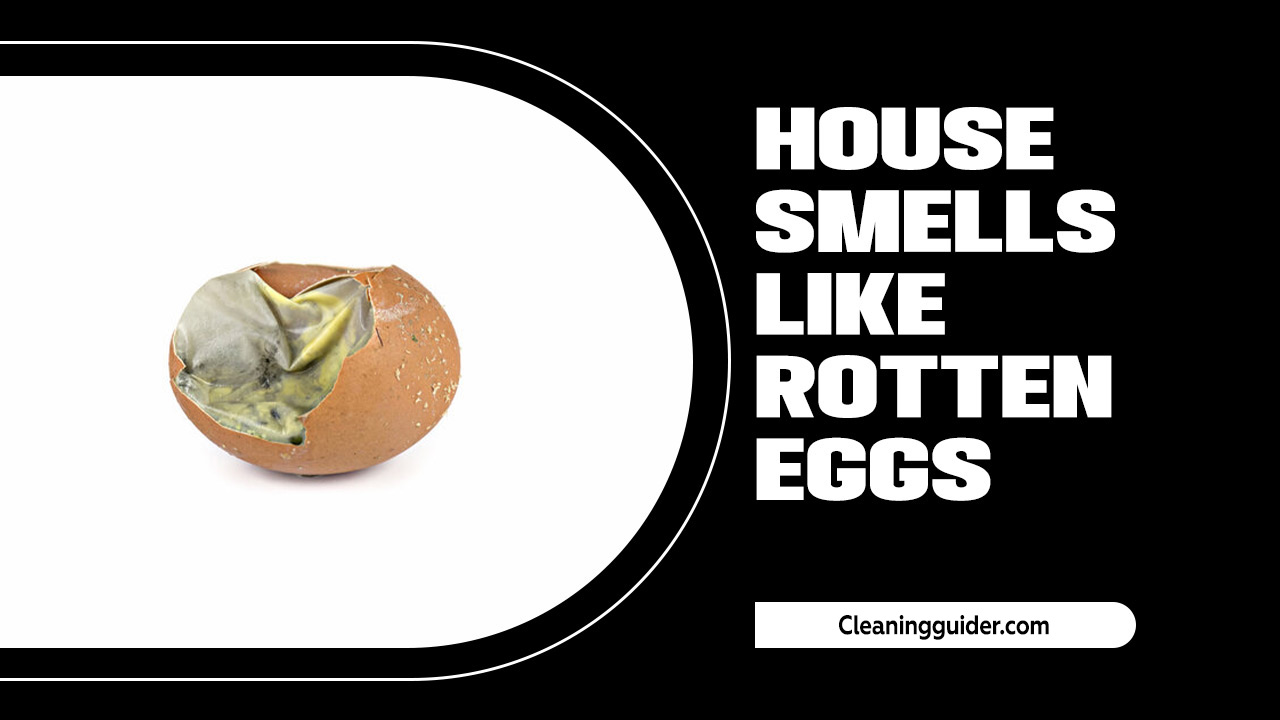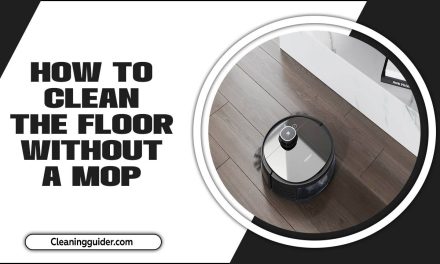A clean and hygienic bathroom is essential for maintaining a healthy living space. However, even with regular cleaning, toilet seats can accumulate stains over time.
These unsightly marks not only ruin the appearance of the toilet, but they can also harbor bacteria and germs. If left untreated, stains on the toilet seat can become increasingly difficult to remove and may require expensive replacements. Fortunately, there are several simple and cost-effective methods for removing stains from toilet seats.
Here we will discuss how to remove stains from toilet seat & the different types of toilet seat stains, and their causes. We will also provide you with 8 effective methods to remove these stains, including using baking soda and vinegar, lemon juice, hydrogen peroxide, bleach, borax, white vinegar, denture tablets, and commercial cleaners. Additionally, we will also address how to tackle stubborn Harpic stains and whether some stains are permanent on toilet seats.
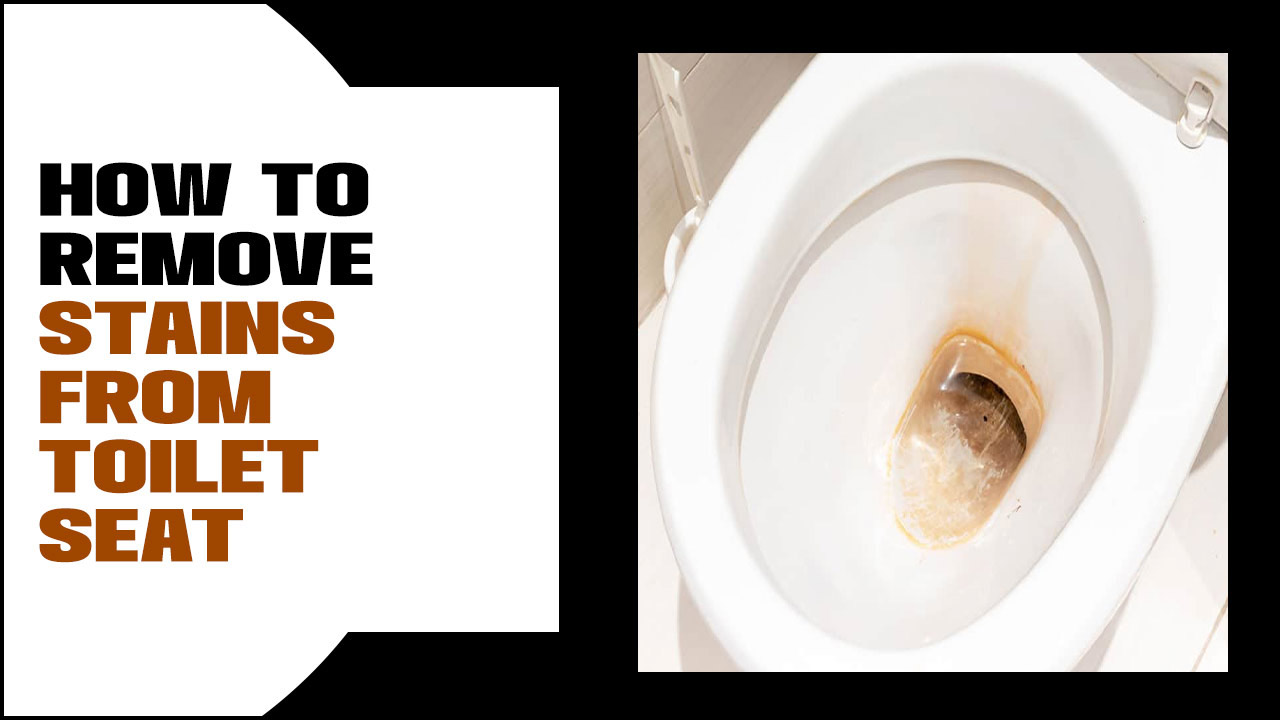
The Different Types Of Toilet Seat Stains
Removing stains from a toilet seat can be a daunting task, but there are some unconventional methods that you can try to get rid of those stubborn marks. One method is to use a mixture of baking soda and vinegar. Simply sprinkle baking soda onto the stained area, then spray vinegar on top.
Let it sit for a few minutes before scrubbing it with a toilet brush. Another method is to use denture tablets. Drop a couple of denture tablets into the toilet bowl and let them dissolve. Then use a toilet brush to scrub away the stains.
If you’re looking for a more natural approach, you can try using lemon juice. Squeeze lemon juice onto the stains and let it sit for a few minutes before scrubbing. Remember always to test these methods in a small, inconspicuous area first to ensure they won’t damage your toilet seat.
The Common Culprits Behind Yellow Stains
Urine stains on a toilet seat can occur when proper cleaning and hygiene practices are not followed. Over time, mineral deposits in water can contribute to the formation of yellow stains. Neglecting regular cleaning of the toilet seat can also lead to the buildup of these unsightly marks. Additionally, using certain cleaning products that contain bleach can cause yellow discoloration on the surface. To remove these stains, it’s important to put in some elbow grease.
Start by wiping the stained toilet seat with a damp paper towel or cloth. Then, apply a mixture of bathroom cleaner or dish soap and water to the stain. Gently scrub the area with a wet towel or a soft brush to clean the stains.
Rinse thoroughly to remove any excess residue. It’s recommended to use specific stain removal products designed for cleaning stained surfaces. These simple steps will help you get rid of the yellow stains and restore your toilet seat to its original clean and unattractive sight.
Reasons For Black Stains On Your Toilet Seat
Black stains on a toilet seat can be quite an eyesore. These unsightly marks are often caused by mold and mildew growth, which thrive in high-humidity environments like bathrooms. Poor ventilation can contribute to the development of black stains, as it creates a damp environment that allows mold and mildew to flourish.
Neglecting to clean the underside of the toilet seat can also lead to black stains, as it provides a breeding ground for mold and mildew. To tackle these stains, it’s important to use a bathroom cleaner or a mixture of dish soap and water.
Gently scrub the stained surfaces with a paper towel or a wet towel until the stain is removed. Ensure that all excess cleaning residue is rinsed off to prevent further buildup. By taking these simple steps, you can effectively clean black stains from your toilet seat and restore its pristine appearance.
How To Remove Stains From Toilet Seat: 8 Effective Ways
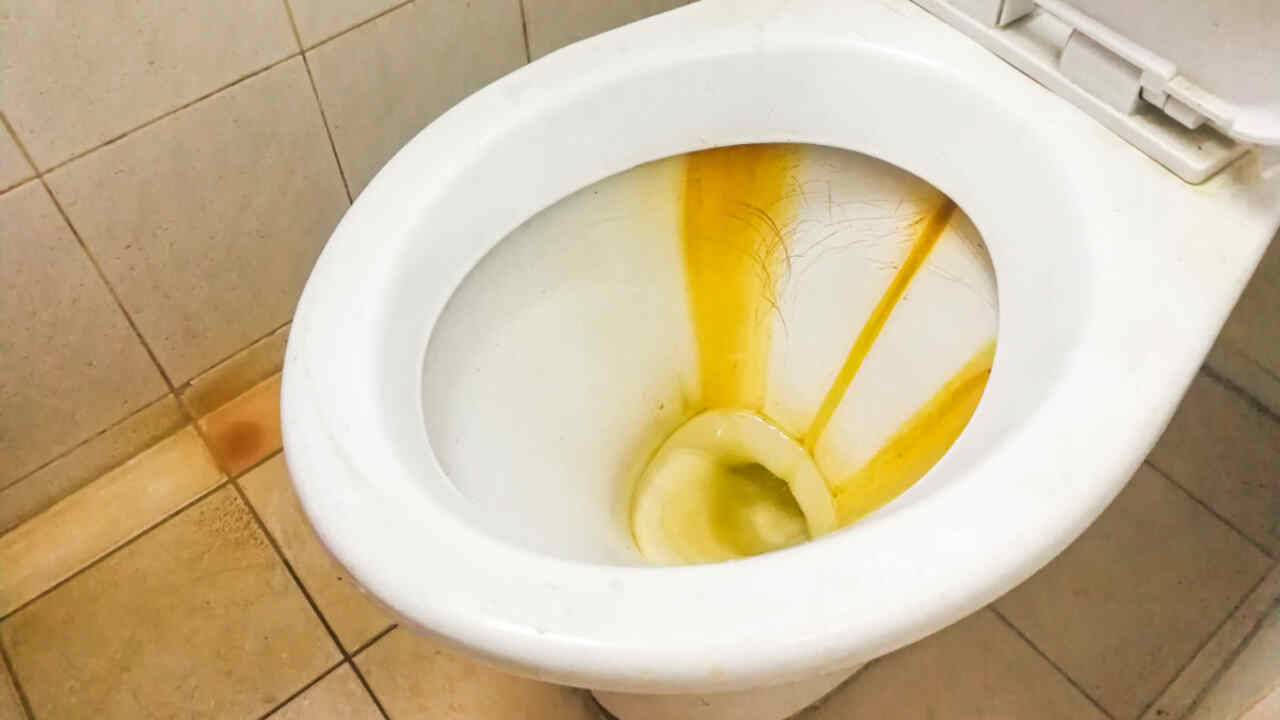
Removing stains from a toilet seat can be a challenging task, but with the right techniques, it is possible to restore its cleanliness. Toilet seats are an essential part of any bathroom, providing comfort and hygiene for users. When choosing a toilet seat, it is important to consider factors such as durability, ease of cleaning, and overall design.
One popular option is a soft-close toilet seat, which features a hinge mechanism that prevents the seat from slamming shut. Remember always to wear gloves when using cleaning solutions, ensure proper ventilation, and test any product or method in an icon. Here are eight effective ways how to remove stains from toilet seat:
1.Baking Soda And Vinegar
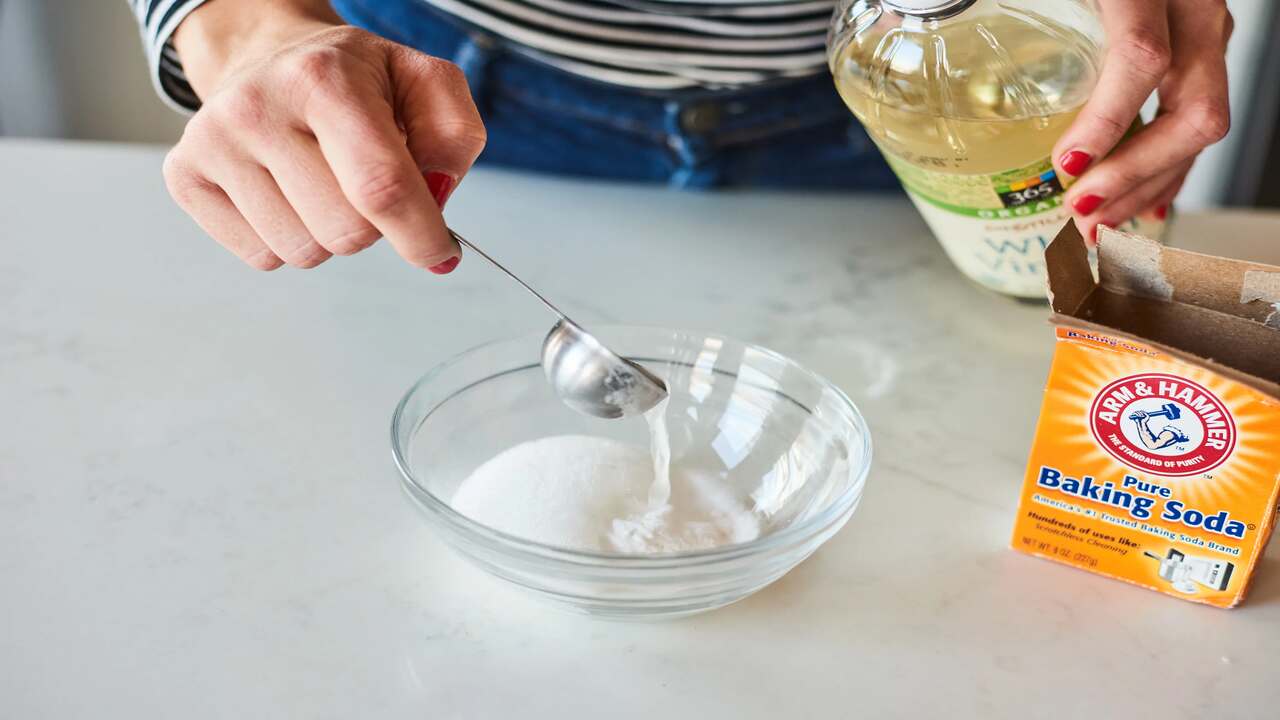
To remove stains from a toilet seat, one effective method is to make a paste using baking soda and vinegar. Apply this paste to the stained areas and then scrub them with a sponge or rag. The combination of baking soda and vinegar helps to break down and lift the stains from the surfaces.
Once you have scrubbed away the stains, rinse the toilet seat with warm water to remove any excess residue. This simple DIY solution can be a great alternative to harsh bathroom cleaners. So, say goodbye to that unattractive sight and hello to a clean and fresh toilet seat.
2.Lemon Juice
To tackle stubborn stains on a toilet seat, lemon juice can be a simple and effective solution. Start by squeezing fresh lemon juice onto the stained areas of the toilet seat. Allow it to sit for a few minutes, giving the lemon’s natural acidity time to work its magic. Then, grab a sponge or rag and scrub the stains with a bit of elbow grease.
The lemon juice will help to break down and lift the stains away. Finally, rinse the toilet seat with warm water to remove any excess residue. Lemon juice is a natural stain-removal method that can leave your toilet seat looking clean and fresh again.
3.Hydrogen Peroxide

To tackle stained toilet seats, one effective method is to use hydrogen peroxide. Start by pouring hydrogen peroxide directly onto the stained areas. Allow it to sit for a few minutes to penetrate and break down the stains. To further enhance the stain removal process, scrub the stains with a sponge or rag using elbow grease. This will help loosen the stains and remove any residue.
Finally, rinse the toilet seat with warm water to ensure a thorough clean. Hydrogen peroxide is a simple yet powerful solution for removing stains from toilet seats, making your bathroom cleaner and eliminating the unattractive sight of stained surfaces.
4.Bleach
Bleach is a potent and effective stain remover for toilet seats. When using bleach, it’s important to dilute it in water according to the product instructions. Apply the diluted bleach to the stained area using a brush or cloth, making sure to cover the entire stain. Allow the bleach to sit on the stain for a few minutes to penetrate and break down the discoloration.
Afterwards, use a brush to scrub the area, applying some elbow grease to remove the stain. Rinse the toilet seat thoroughly with water to remove any residue, and dry it with a paper towel or a clean, dry cloth. Remember always to wear gloves and protective eyewear when working with bleach to avoid any potential harm.
5.Borax
One effective way to remove stains from a toilet seat is by using borax. Borax is a natural mineral that can effectively clean stained surfaces without the need for harsh chemicals. To use borax, create a paste by mixing 1/4 cup of borax with 1 cup of water. Apply the paste onto the stained area of the toilet seat and let it sit for 15-20 minutes.
Afterward, scrub the stained area with a brush or sponge and rinse with water. Borax is an affordable and eco-friendly alternative for stain removal, making it a great option for those who prefer simple and environmentally-friendly cleaning methods.
6.White Vinegar
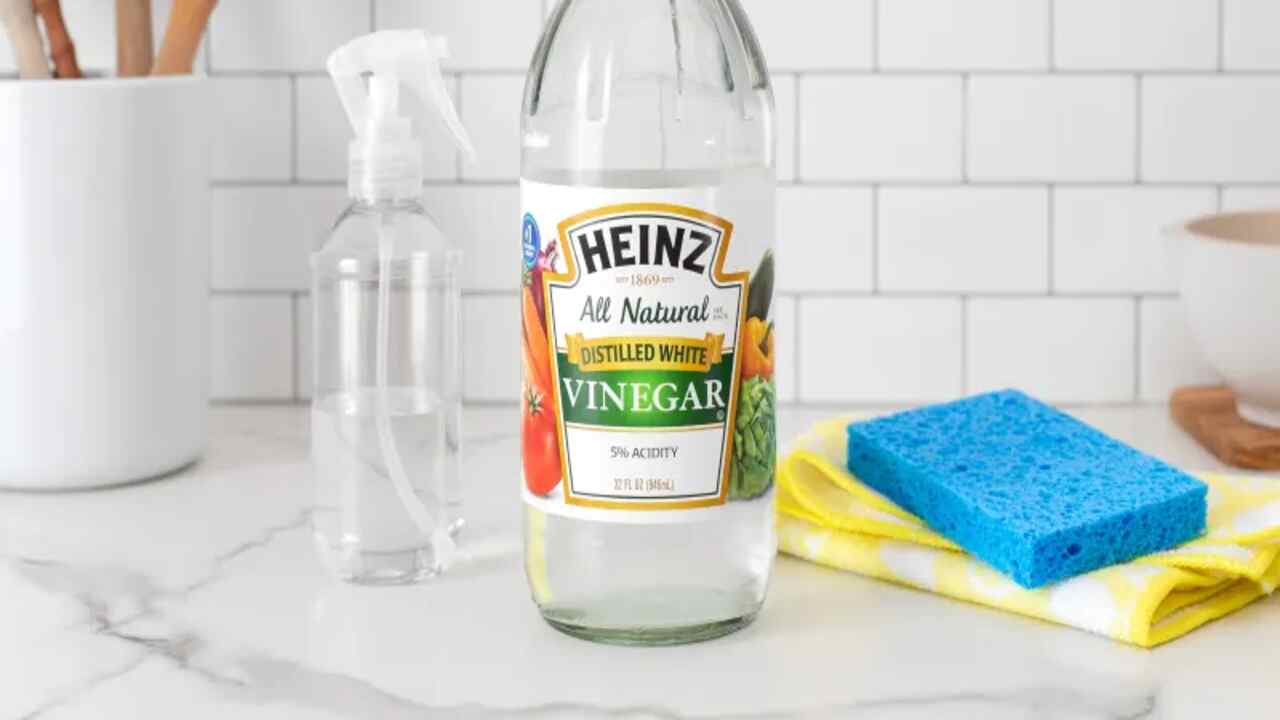
White vinegar is a natural and effective cleaner for removing stains from toilet seats. A simple mixture of equal parts white vinegar and water in a spray bottle can do wonders. Just spray the solution onto the stained area and let it sit for a few minutes. Then, grab a brush or sponge and begin scrubbing the area.
Once you’re done, give the toilet a good flush. If the stain persists, don’t worry – just repeat the process until the stain is completely gone. The great thing about white vinegar is that it’s not only useful for toilet seat stains but also other bathroom surfaces like sinks and showerheads. With vinegar in hand, those unsightly stains will be a thing of the past.
7.Denture Tablets
When it comes to removing stains from a toilet seat, different types of stains may require different cleaning methods. While common household cleaners like vinegar and baking soda can be effective for mild stains, tougher stains may require the use of a pumice stone or bleach.
However, there’s another surprising method you can try: denture tablets. Denture tablets, often used to clean dentures, can also be effective for removing stains from a toilet seat. Simply follow the instructions on the packaging and let the tablet dissolve in water. Then, use a brush or sponge to scrub the stained area.
Always remember to follow proper safety precautions when handling cleaning products. Regular cleaning and maintenance can also help prevent stains from building up in the first place.
8.Commercial Cleaners
When it comes to removing stains from a toilet seat, commercial cleaners can be an effective solution. First, you need to identify the type of stain on the toilet seat. If it’s a mild stain, you can try using natural remedies like baking soda and vinegar.
These simple steps involve creating a paste with baking soda and vinegar, applying it to the stain, and letting it sit for a while before scrubbing it with a wet towel or sponge. For tougher stains, a pumice stone can be used to scrub away the stains with a little elbow grease.
If you’re dealing with more stubborn stains, consider using a bleach solution. This can help to break down the stain and make it easier to clean. Another option for organic stains is to create a paste using hydrogen peroxide and baking soda and apply it to the stained surfaces.
Finally, for hard water stains, a specialized toilet bowl cleaner can be effective. Just remember to follow the instructions on the packaging and ensure proper ventilation when using any cleaning products. By using these commercial cleaners, you can say goodbye to the stains on your toilet seat and restore its cleanliness and freshness.
How To Tackle Stubborn Harpic Stains?
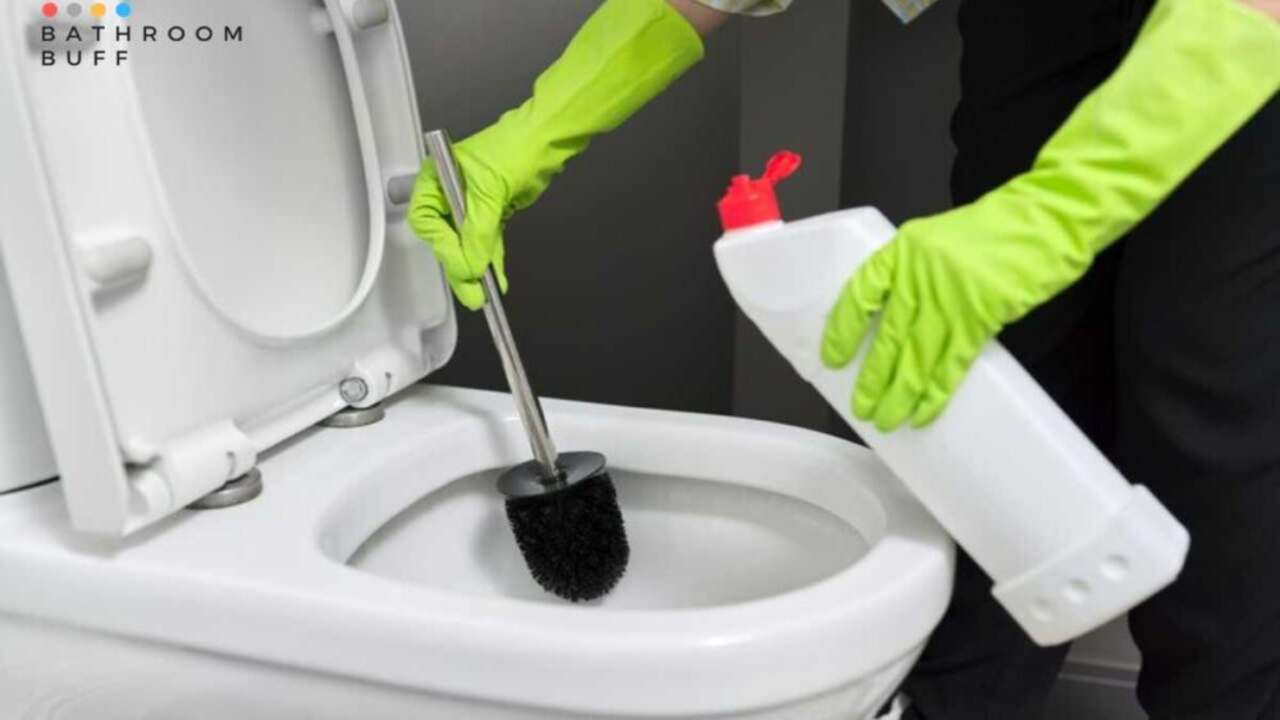
Stubborn Harpic stains on a toilet seat can be frustrating to deal with, but with the right approach, they can be removed. Remember always to read and follow the instructions on cleaning products and test any new cleaning method on a small, inconspicuous area first to avoid damaging your toilet seat.
With persistence and the right cleaning techniques, you can say goodbye to those stubborn Harpic stains and enjoy a clean toilet seat once again. Here’s how to tackle those stubborn stains:
- Start by wearing protective gloves and ventilating the bathroom.
- Mix equal parts of white vinegar and water in a spray bottle.
- Spray the solution onto the stained area and let it sit for a few minutes.
- Use a toilet brush or scrub brush to scrub away the stain gently.
- If the stain persists, try using a paste made of baking soda and water. Apply it to the stain, let it sit for a few minutes, and then scrub with a brush.
- Rinse the area thoroughly with water.
- For extra cleaning power, you can also use a commercial toilet cleaner specifically designed to remove tough stains like Harpic.
Are Some Stains Permanent On Toilet Seats?
Removing stains from a toilet seat can be a frustrating task, but fortunately, most stains can be successfully removed with the right techniques and products. However, some stains may be more stubborn and difficult to remove.
For example, if a stain has been left untreated for a long period or if it is caused by certain substances like rust or hard water deposits, it may be more challenging to eliminate completely. In these cases, it may require more intensive cleaning methods or the use of specialized stain removers.
It’s always best to try different cleaning solutions and techniques before assuming that a stain is permanent. With patience and persistence, you can usually restore your toilet seat to its original clean and pristine condition.
What Are Some Unconventional Methods To Clean A Toilet Seat?

Removing stains from a toilet seat can be a daunting task, but there are some unconventional methods that you can try to get rid of those stubborn marks. One method is to use a mixture of baking soda and vinegar. Simply sprinkle baking soda onto the stained area, then spray vinegar on top.
Let it sit for a few minutes before scrubbing it with a toilet brush. Another method is to use denture tablets. Drop a couple of denture tablets into the toilet bowl and let them dissolve. Then use a toilet brush to scrub away the stains.
If you’re looking for a more natural approach, you can try using lemon juice. Squeeze lemon juice onto the stains and let it sit for a few minutes before scrubbing. Remember always to test these methods in a small, inconspicuous area first to ensure they won’t damage your toilet seat.
Conclusion
Toilet seat stains can be unsightly and difficult to remove, but with the right approach, you can restore your toilet seat to its original cleanliness. From natural solutions like baking soda and vinegar to commercial cleaners and unconventional methods, there are several effective ways to tackle different types of stains.
Remember always to follow safety precautions and test any cleaning solution on a small, inconspicuous area before applying it to the entire seat. Additionally, for stubborn Harpic stains, there are specific techniques that can help you get rid of them.
By taking the time to clean your toilet seat properly, you can maintain a hygienic and visually appealing bathroom. We’ve discussed how to remove stains from toilet seat. So, say goodbye to stains and hello to a sparkling toilet seat.
Frequently Asked Questions
1.What Is The Best Cleaner For Toilet Seat Stains?
Ans: The best cleaner for toilet seat stains depends on the type of stain. For mild stains, a mixture of vinegar and baking soda can be effective. For tougher stains, bleach or a commercial toilet bowl cleaner may be necessary. Always follow the manufacturer’s instructions and use protective gloves when handling cleaning products.
2.How Do You Remove Years Of Toilet Stains?
Ans: To remove years of toilet stains, try these effective methods. Scrub stubborn stains with a pumice stone. Make a paste of baking soda and hydrogen peroxide to apply on the stains. Use vinegar and borax for tough stains. Regularly clean with bleach or specialized toilet bowl cleaner to prevent buildup.
3.What Causes Stains On A Toilet Seat?
Ans: Stains on a toilet seat can be caused by various factors, including hard water, urine, and mold. Regular cleaning with appropriate products can help prevent and remove stains. Improper maintenance can also contribute to stain buildup.
4.Why Does My Toilet Seat Turn Orange?
Ans: Orange stains on toilet seats are often caused by mineral buildup from hard water. These minerals can react with cleaning chemicals, resulting in discoloration. Scratching the surface of the toilet seat with abrasive cleaners or tools can also make it more prone to staining. Regular cleaning and maintenance can help prevent and remove these orange stains.
5.Why Take Time To Keep The Toilet Seat Sparkling?
Ans: Regularly cleaning your toilet seat is crucial for maintaining a hygienic bathroom. It prevents the accumulation of germs and bacteria, improves the overall appearance of your bathroom, and leaves a good impression on guests. Additionally, keeping your toilet seat clean saves time and money by preventing stubborn stains.

